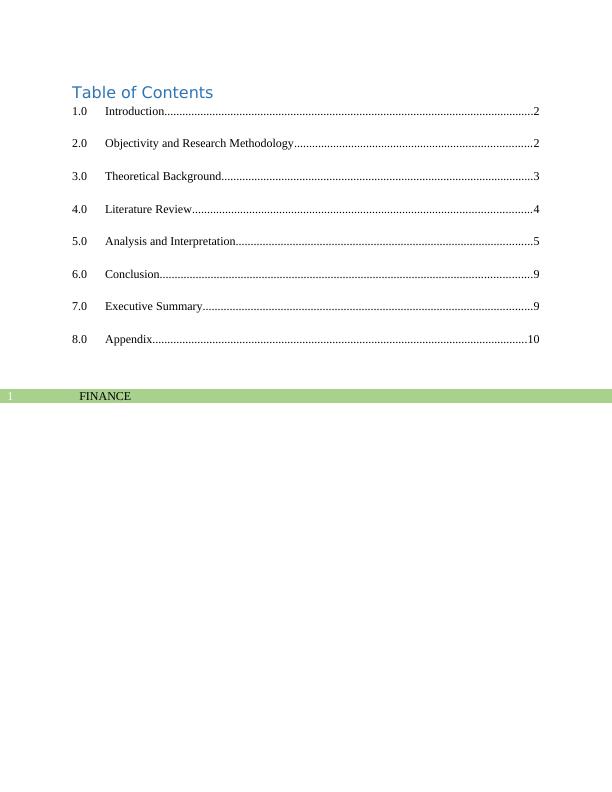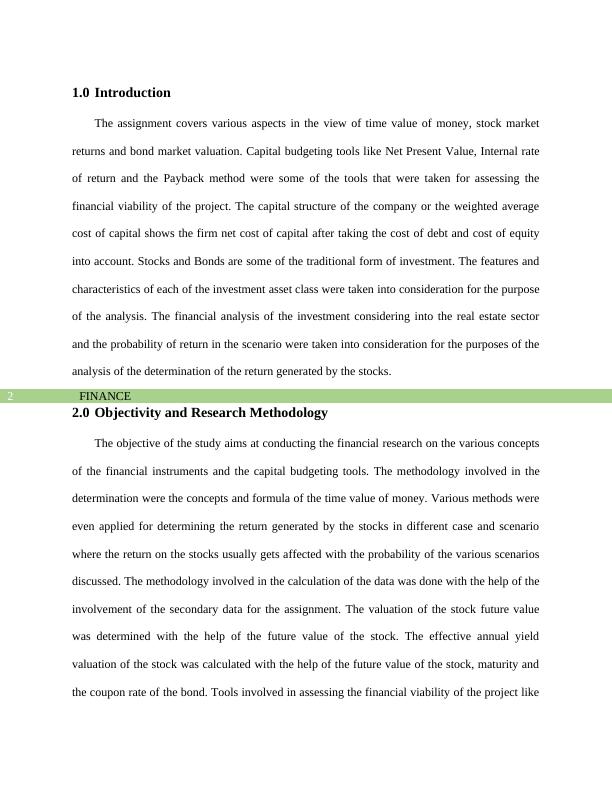Finance Assignment: Time Value of Money, Stock Market Returns, and Bond Market Valuation
12 Pages2304 Words365 Views
Added on 2022-12-15
About This Document
This finance assignment covers various aspects of time value of money, stock market returns, and bond market valuation. It includes topics such as capital budgeting tools, stock valuation, weighted average cost of capital, and investment analysis.
Finance Assignment: Time Value of Money, Stock Market Returns, and Bond Market Valuation
Added on 2022-12-15
ShareRelated Documents
End of preview
Want to access all the pages? Upload your documents or become a member.
Finance Assignment: Time Value of Money, Capital Budgeting, and Financial Investments
|14
|2868
|25
Corporate Finance
|12
|2673
|188
Corporate Finance - Marginal Cost of Capital ( MCC )
|14
|2949
|11
Fundamentals of Finance: WACC, NPV, IRR and Payback Period
|9
|1578
|348
Financial Management Study Material
|13
|4033
|65
Capital Budgeting Techniques and Investment Appraisal Methods for Evaluating Financing and Project Decisions
|18
|3910
|260




